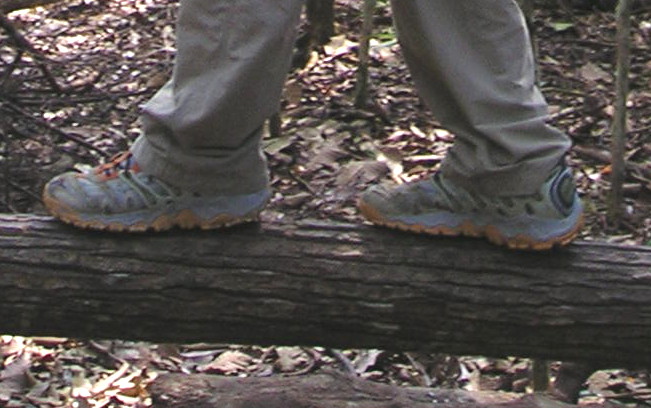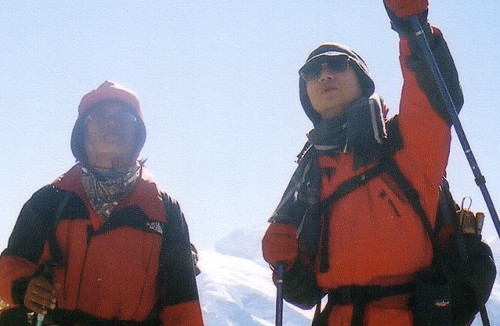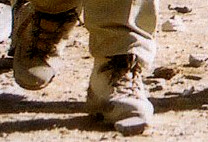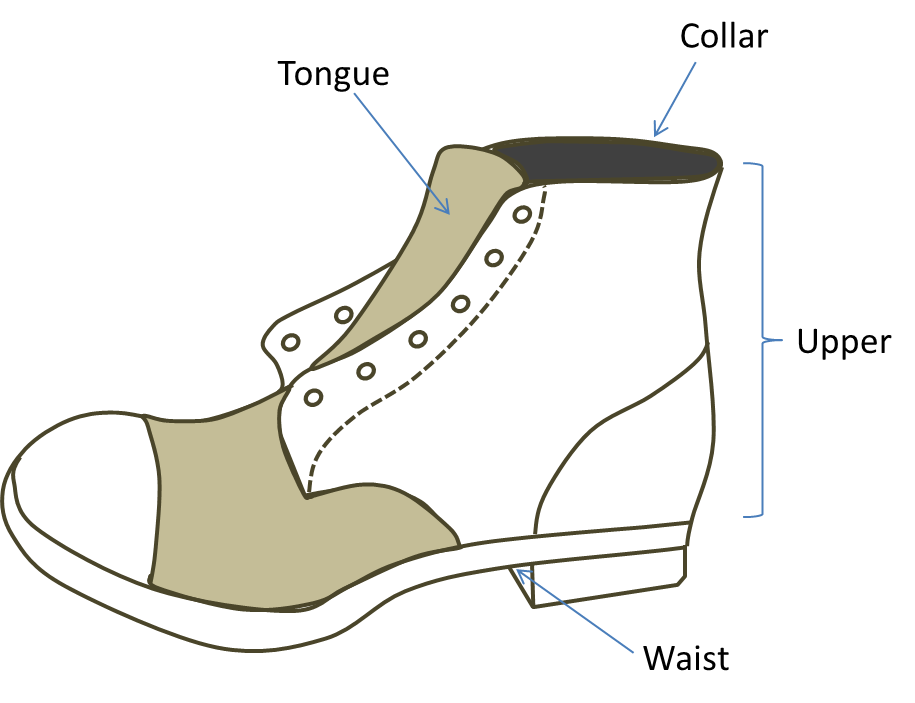
Shoes anatomy |
The terrain for outdoors trekking varies significantly ranging from city park walk to snow mountains trail. Certainly the selection of footwear very much depends on the terrain you are expected to encounter. This article provides a general recommendation for the selection of footwear starting from the simplest trek to the more demanding trail.
Criteria:
- Fitting - Tight fit or some room at the front. Trekking shoes that are more heavily constructed especially mid-cut and high-cut shoes should have some space at the front toes. This is to absorb any impact when the shoes are kicked against any hard object on the trek. Approximately one finger space or less along the length of the foot is advisable.
- Waterproof material, leather or man-made breathable membrane (eg. Gortex) - Leather are water resistant and not waterproof. Wax coating may be applied to improve its water repellency. Good maintenance of leather shoes will prolong the usage life and water repellency of the shoe. Man-made breathable membranes are waterproof. These membranes are usually delicate and are sandwiched between more durable fabrics for protection against wear. However, they are still susceptible to tear after prolong usage. Nevertheless, these shoes are more popular compared to leather shoes.
- Seams - Generally, where there are fewer seams, there are less "weak" points for entry of water into the shoes.
- Low-cut, mid-cut or high-cut - Low cut shoes have its uppers stopping before the ankle. These shoes allow the most freedom of movement in terms of feet placement on more technical grounds. Mid-cut shoes have its uppers covering part of the ankle which provide some protection against twisting of ankles when walking on rough terrains. The uppers of high cut shoes extend beyond the ankle and offer the most support and protection for the ankles.
- Shoe tongue - General consideration of the tongue is whether is it sewn or unsewn? Tongue sewn to the shoe upper prevents water from entering the shoes from the side of the tongue. Unsewn tongue allows more ventilation to the foot and easier drying when the shoes' interior are wet.
City Park Walk/Trail
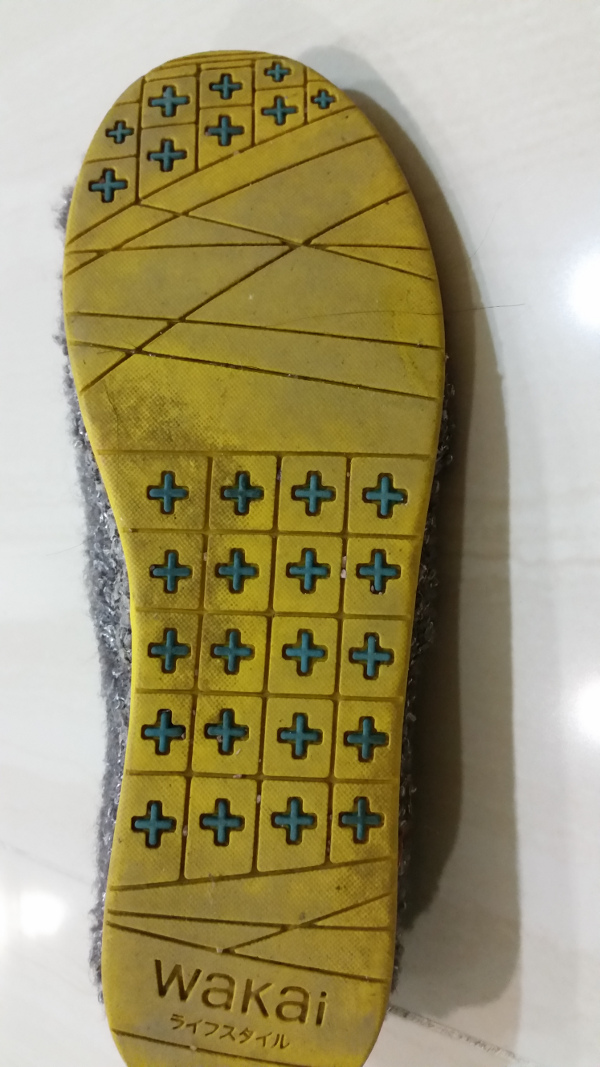 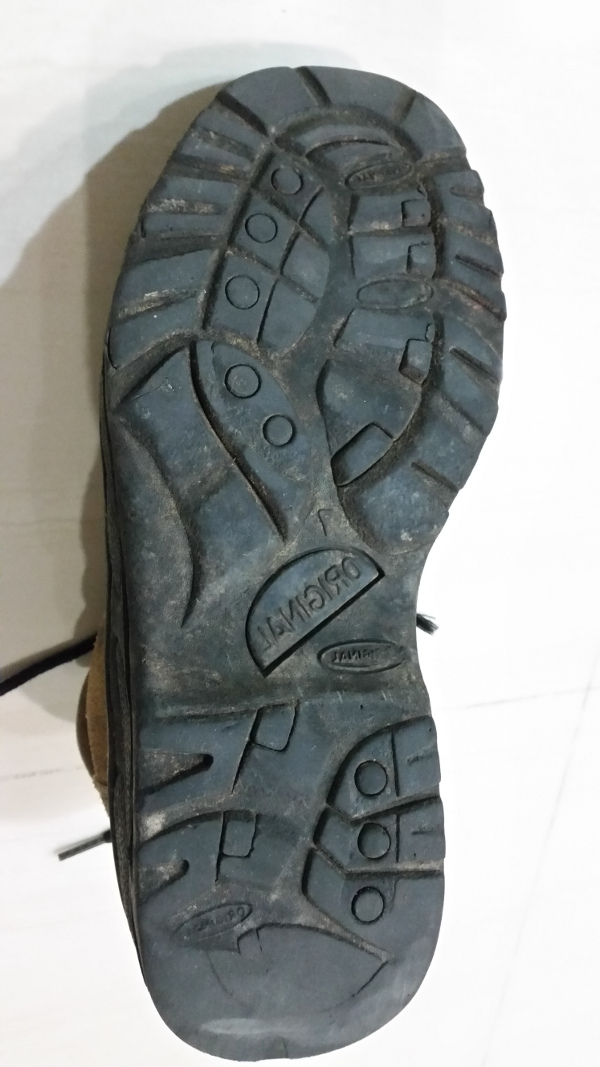
Sole of shoes. (Left) Nomal city shoe with flat base. (Right) Trekking shoe with deeper threads. |
Most comfortable shoes may be used in a city park walk on solid man-made pavement. However, if dirt trails are expected, a cross trainer shoes or otherwise running shoes should be worn instead of canvas shoes. The difference lies in the design of the sole. The sole of most city shoes are flat with shallow groove threads. This provides little grip on the ground and may be slippery under wet condition. In contrast, most running shoes and cross trainer shoes have stubs and groove threads sole that runs perpendicular to the direction of walking which give better friction1. Between running shoes and cross trainer shoes, the latter is preferred as it offers more stability from the side with wider sole as running shoes are designed for movement in the forward direction and the sole tends to be narrower.
Forest/hill trekking
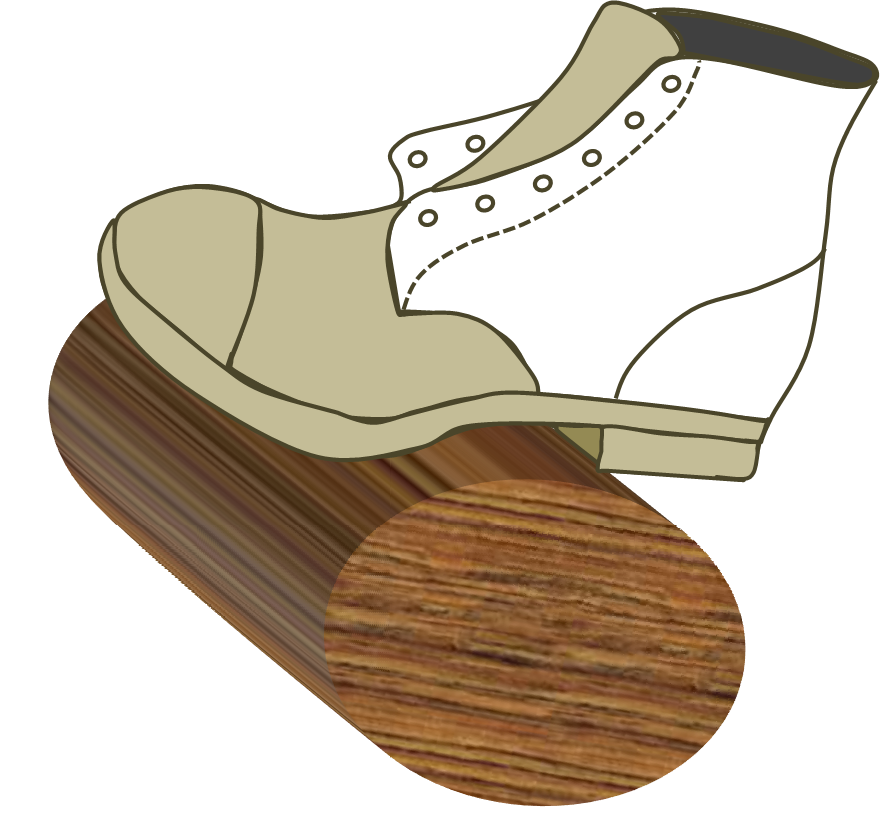
Planting the shoes waist aganst a log for stability. |
Where rough and uneven terrains are expected, trekking shoes with a waist at the sole is preferred. This allows you to place your foot on logs and thick roots with the waist of the sole for better stability. A mid-cut shoe (side of the shoes fully covering the ankle) provides better ankle support and prevents twisting of the ankle when stepping on uneven surfaces. It also reduces the chances of loose stones slipping into the shoe from its collar. The disadvantage is that they are generally less flexible and heavier which provides less "feel" of the ground if more delicate foot placement is required. When snow, wet or muddy condition is expected, shoes made of waterproof or water resistant material is preferred. Traditionally, this is made out of leather which is water resistant and breathable. They may be treated with water repellent coating to enhance its water repellency. Modern days waterproof trekking shoes are made out of breathable waterproof synthetic material such as Gortex. Apart from getting a pair of shoes made from water-proof or resistant material, a bellow tongue shoe (tongue of the shoe that is sewn to the side of the shoe upper) will prevent water from going into the shoe's interior from the side of the tongue. The disadvantage of a bellow tongue shoe is that there is less ventilation inside the shoe and it takes longer time to dry if it gets wet.
Long distance trekking
Selection criteria for long distance trek are very similar to those used for forest/hill trekking. For long distance treks on rough terrain, trekking shoes should either be mid-cut or high-cut. High-cut shoes or boots provide the most support for the ankle although it is the least flexible in terms of feet positioning on the trail. Mid-cut and high-cut shoes also allows long trousers to cover the collar of the shoes such that loose stones, snow and ice will not enter the shoe from its collar and it also allows rain water to flow from the trousers to the outside of the shoes. Waist at the sole is very much preferred both for stability when stepping on obstacles and for tying of gaiters if required. The shoes should also be made out of waterproof material unless it is certain that the weather and ground will be dry.
Pre-trek preparation
Trekking boots designed for more demanding terrains usually have a stiffer sole and tougher upper. Since individual foot is unique (even your left and right foot differs slightly), your new shoe is likely to have "stress" points in contact with some part of your foot which may cause blisters to develop over prolong wear. It is recommended that the shoes are worn for a few rounds of training prior to your trip to "break-in" the shoe. Parts that create "stress" points on your foot will soften during these training/walking sessions while the duration of wear is not long enough to cause blisters to form.
